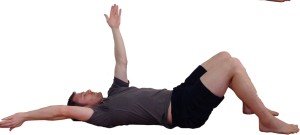If you ask any good coach or trainer what one of the most important components of a fit and healthy body is, they should tell you it’s mobility. Mobility is one of the pillars that help us create strong, healthy, long-lasting bodies. Not to be confused with flexibility (just as important however), mobility is defined by your ability to move through a full range of motion. Flexibility is more so the ‘stretchy-ness’ of a particular muscle.
Mobility sits at the base of everything. Without mobility, you don’t have stability. Without stability, you can’t move safely and efficiently. If you can’t move properly, your strength and endurance training are impacted.
So, are you mobile? There are three, easy self-assessments you should do, that will give you an instant understanding of the areas you should focus on in your mobility work, as well as some movements you should avoid until you improve your mobility! There are 3 major joints we refer to when talking mobility; Hips (hinging movements), Shoulders/Upper Back (pushing/pulling movements) and Ankles (Squatting).
HIP TEST.
GOAL: Get leg to 90 degrees.
Lie flat on your back, with legs full stretched out. Wrap a band around one foot and slowly raise the leg, keeping it completely locked out. If the knee bends, or lower back comes off the ground, stop the stretch. Test both legs.
Movements to watch: Deadlifts, cleans and snatches. These all put heavy loads on the hamstrings, which if not at optimal mobility, can cause injury.

SHOULDER/UPPER BACK TEST
Goal: Get your hand to the floor.
Lie on the floor with knees bent at 90 degrees and feet on the floor. Raise both arms (palms facing in) perpendicular to the body. Slowly lower one arm straight overhead, as far as you can without bending the arm or raising the lower back. Test both sides
Movements to watch: Overhead Pressing and Overhead Squats are the big ones to look out for here.

ANKLE TEST
Goal: Get knee to wall from roughly 10cm away.
Start in a kneeling (lunge) position, facing the wall. Aim to have your front foot roughly 7-10 cm away from the wall. Keep your heel flat on the ground and body upright, slowly drive your front knee forwards, trying to touch the wall. If you lose your foot position stop the movement.
Movements to watch: Squatting. The ankle is a high unrecognised inhibitor of the squat, and improving ankle mobility can drastically increase the movement. All major squatting motions (specifically fast, explosive ones i.e. olympic lifting) need to be considered here.

WHAT NOW?
From each test, it’s important you take away two things. 1 – Do I have below-optimal mobility in any of my joints and 2, is there an imbalance between right and left. If you find you’re answering yes to these questions, put aside an extra 10 minutes before and/or after each training session to work them.
In terms of specific mobility exercises, everyone is different and there is no one-size-fits-all approach. Ask your coach what they recommend in terms of your mobility and how to improve it.
If you answered no to both of these questions, ensure you maintain that optimal mobility!



